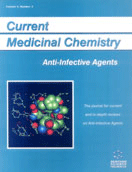Abstract
Efforts to mimic the antibacterial properties of the polymyxin peptide antibiotics and the steroid antibiotic squalamine have resulted in the development of novel antimicrobial agents comprised of cationic steroids. These cationic steroid antibiotics (CSAs) display a range of antibacterial properties including effective bactericidal activity and the ability to permeabilize the outer membranes of gram-negative bacteria sensitizing them to hydrophobic antibiotics that ineffectively traverse the outer membrane. CSAs demonstrate membrane activity similar to that of many cationic peptide antibiotics and likely exert their bactericidal effects via the ‘carpet’ model. CSAs have been constructed in such a fashion that they are stable under acidic and basic conditions. Other examples have been assembled using functionality that is sensitive to pH, and these compounds tend to decompose under mildly basic conditions to yield endogenous or non-toxic components. These later compounds may prove useful in preventing microbial growth in food. The potential for systemic clinical use among membrane-active antibiotics may depend upon eukaryotic vs. prokaryotic cell selectivities. Examples of CSAs are bactericidal at low concentrations while displaying very weak or undetectable hemolytic activities. Other examples have proven to be very hemolytic. The cell selectivities of CSAs may depend upon recognition of the anionic charges of the membranes of prokaryotes.
Keywords: cationic antibiotic, steroid antibiotic, squalamine, csas
 10
10

